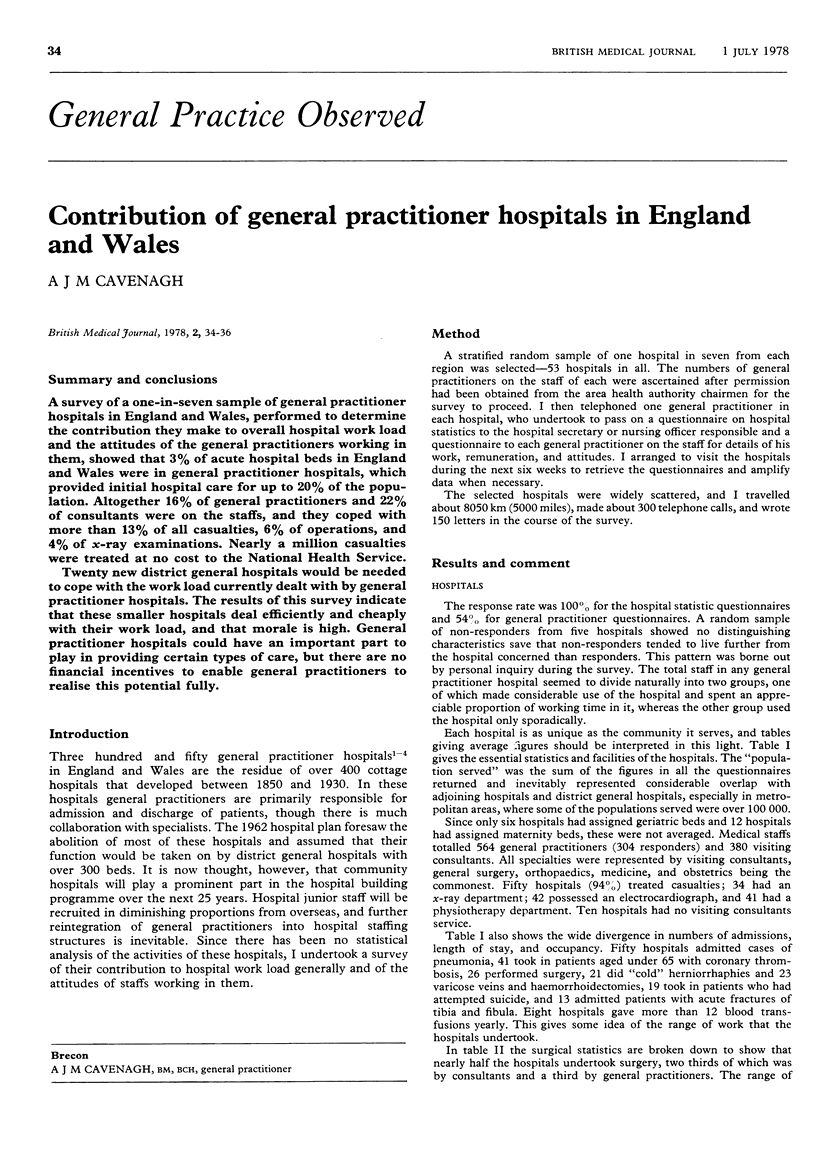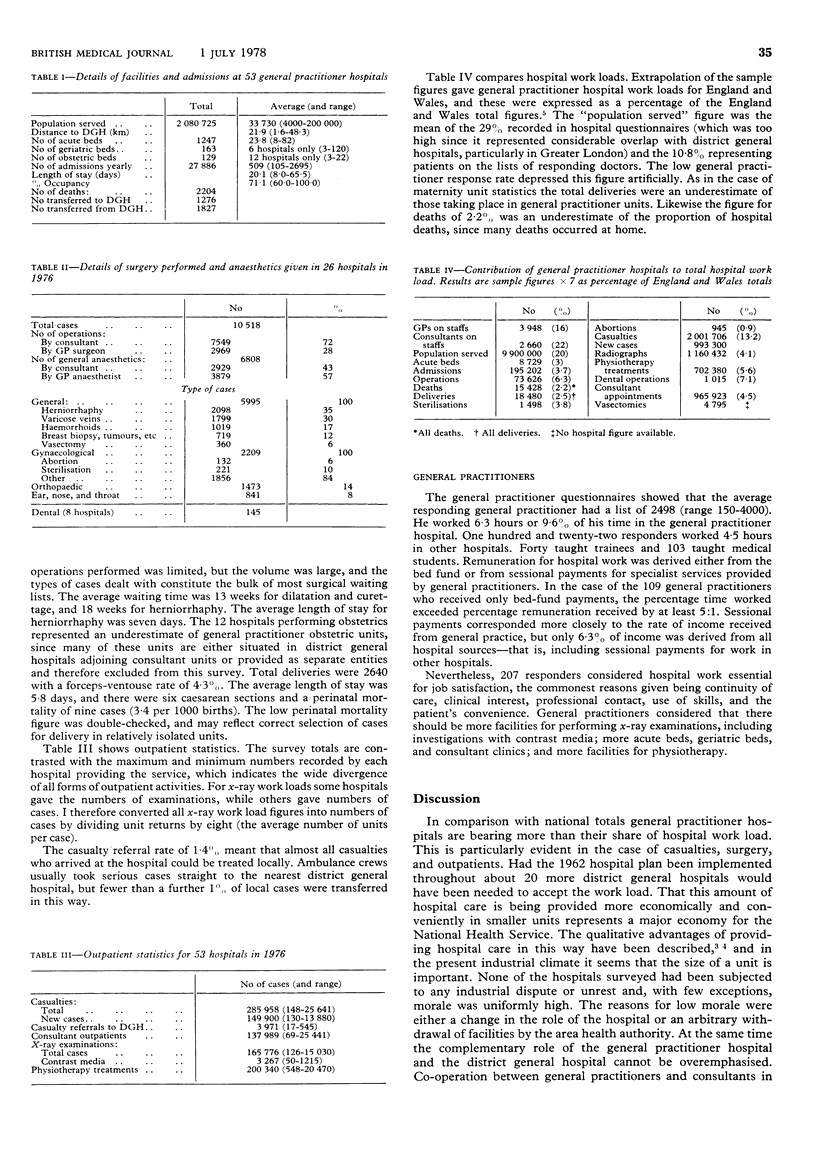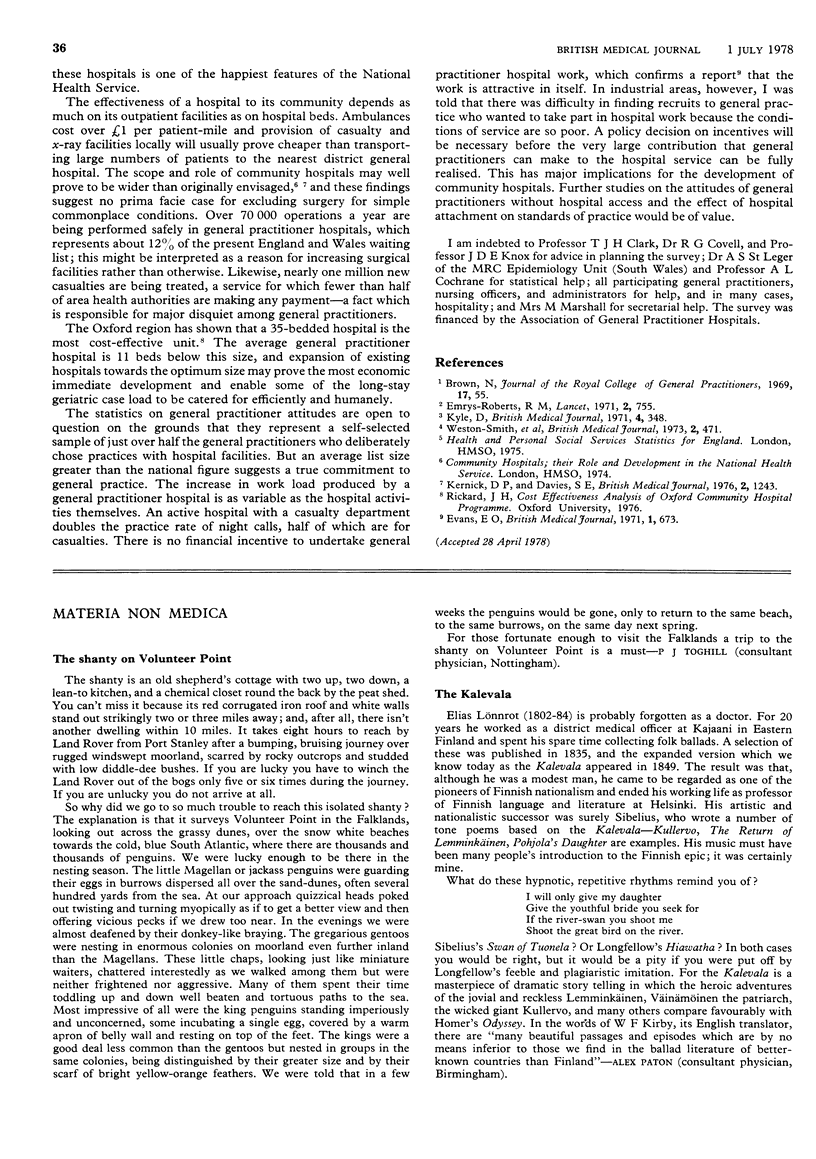Abstract
A survey of a one-in-seven sample of general practitioner hospitals in England and Wales, performed to determine the contribution they make to overall hospital work load and the attitudes of the general practitioners working in them, showed that 3% of acute hospital beds in England and Wales were in general practitioner hospitals, which provided initial hospital care for up to 20% of the population. Altogether 16% of general practitioners and 22% of consultants were on the staffs, and they coped with more than 13% of all casualties, 6% of operations, and 4% of x-ray examinations. Nearly a million casualties were treated at no cost to the National Health Service. Twenty new district general hospitals would be needed to cope with the work load currently dealt with by general practitioner hospitals. The results of this survey indicate that these smaller hospitals deal efficiently and cheaply with their work load, and that morale is high. General practitioner hospitals could have an important part to play in providing certain types of care, but there are no financial incentives to enable general practitioners to realise this potential fully.
Full text
PDF


Selected References
These references are in PubMed. This may not be the complete list of references from this article.
- Emrys-Roberts M. General-practitioner hospitals. Lancet. 1971 Oct 2;2(7727):755–756. doi: 10.1016/s0140-6736(71)92119-2. [DOI] [PubMed] [Google Scholar]
- Kernick D. P., Davies S. E. The community hospital: a three-year study. Br Med J. 1976 Nov 20;2(6046):1243–1245. doi: 10.1136/bmj.2.6046.1243. [DOI] [PMC free article] [PubMed] [Google Scholar]


